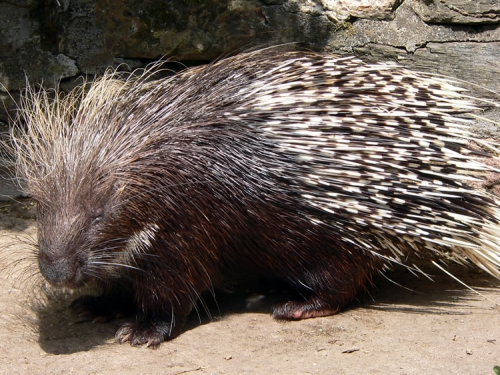
(Borrowed this photo from Free Stock Photos for websites - FreeDigitalPhotos.net)
“The North American porcupine waddles through the forests of North America” begins Porcupines by Sandra Markle. As part of the Animal Prey series, this book explains what prey and predators are and how porcupines are prey. Porcupines can defend themselves with their quills, special hairs that are stiff and needlelike.
In contrast, Porcupines by Jen Green starts out with a Fact File summary of information and then asks, “What animal is pricklier than a pincushion?” This version is part of the Nature’s Children, Second Series, a revamped version of the popular earlier Nature’s Children series.
Both books have amazing photographs of porcupines, and in fact it is obvious that some of the photographs came from the same sources. With a larger size, the photographs in Markle’s book are stunning and definitely attract your eye. Green’s smaller format book, however, fits comfortably in smaller hands. While Green’s book starts out with a Fact File summary, Markle’s has a “Looking Back” section at the end, which is an interesting way to review the material.
As far as information, both books cover how porcupines are nocturnal, that they eat plants and that they crave salt. Both mention that porcupines have a waddling gait and that they are surprisingly good swimmers. Markle’s book states that porcupines have a fatty substance on the quills that acts as an antibiotic and protects the porcupines from infection should they stab themselves accidentally. I never thought that a porcupine might be a danger to itself!
Green’s book reveals on page 16 that porcupines smell like “sawdust or old wood.” I have to admit I picked these two books up because I was interested in how porcupines smell. I had seen a television show that listed porcupines in the top 10 smelliest animals. The porcupine at our zoo was named “Stinkerbell.” I had read that the fatty substances on the quills create odors that serve to warn animals away. Somehow, “old wood” doesn’t sound like a warning smell. I guess I have to keep researching that topic.
Overall, Markle’s book might be easier to find for the average parent because the Nature’s Children Series seems to be sold as part of a set for schools or libraries. Both would be helpful and informative to a child who wants to learn more about porcupines.
Porcupines (Nature’s Children, Second Series) by Jen Green
Grolier (Scholastic) Series
LP978-0-7172-8082-7
7 1/4″ x 8 5/8″
2008
More information available at Scholastic
Porcupines by Sandra Markle
Reading level: Ages 9-12
Paperback: 39 pages
Publisher: First Avenue Editions (February 2008)
Language: English
ISBN-10: 0822564424
ISBN-13: 978-0822564423
Nonfiction Monday is a blogging celebration of nonfiction books for kids. For more information, stop by Picture Book of the Day. This week’s post is at Jean Little Library.

